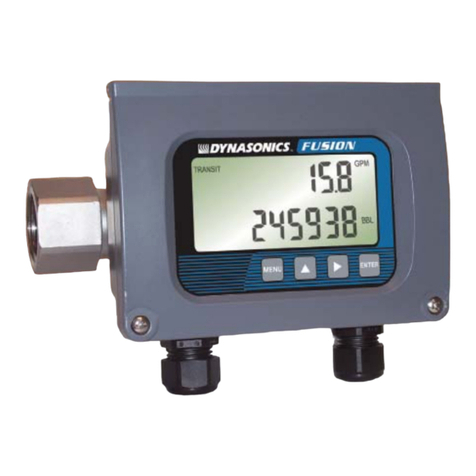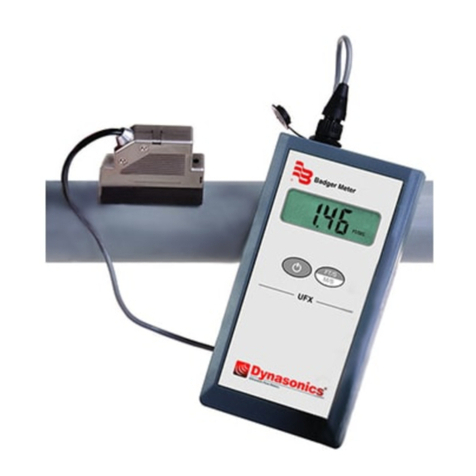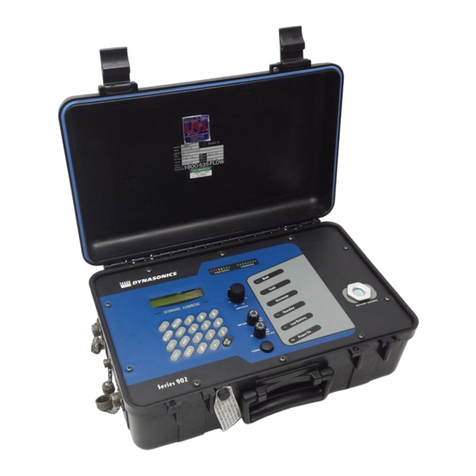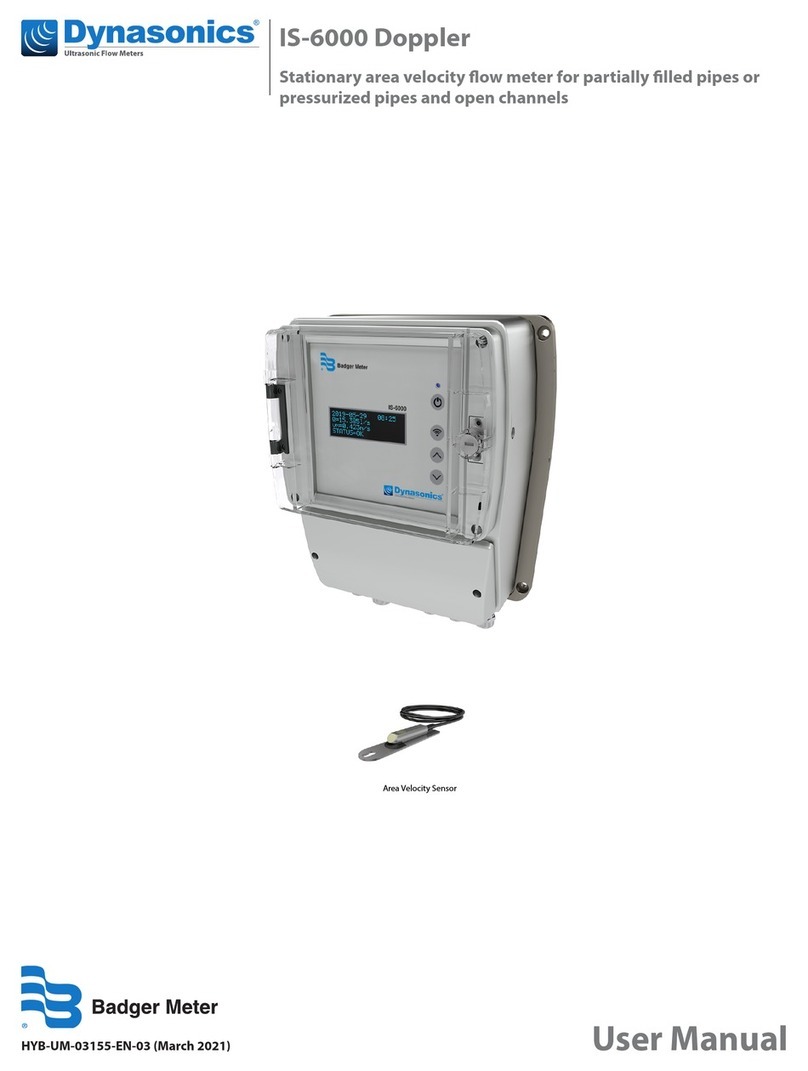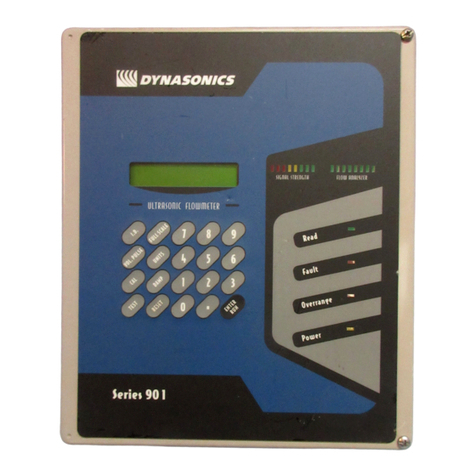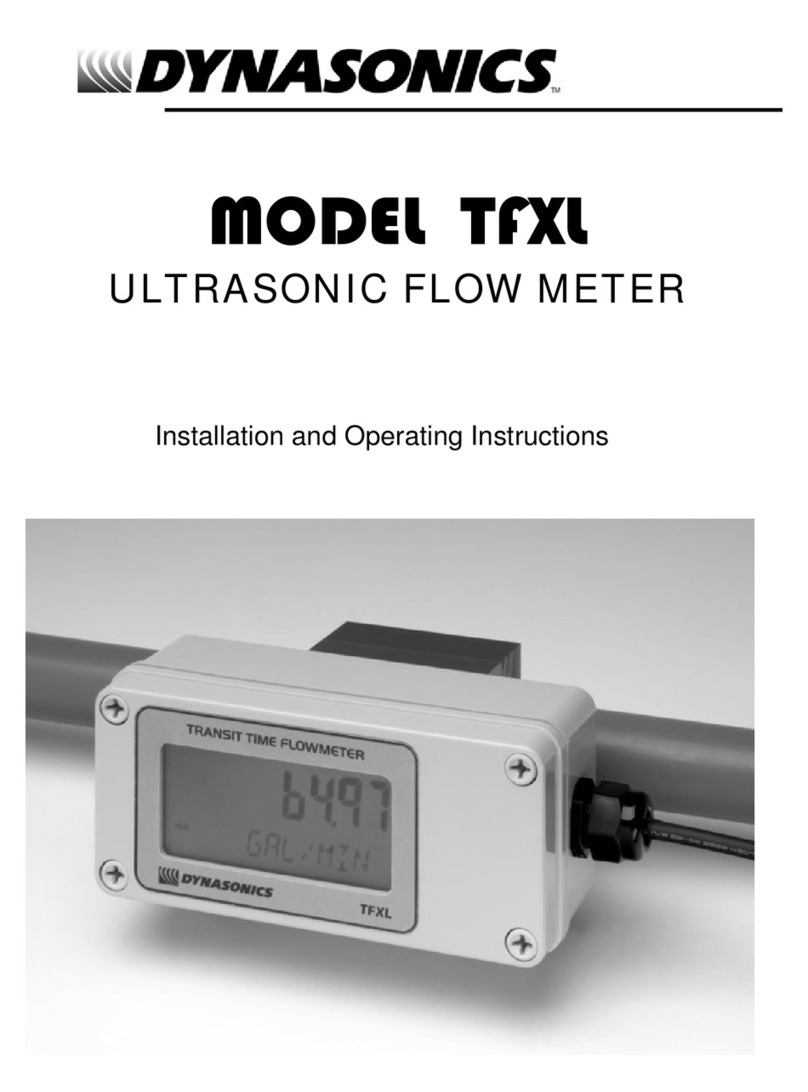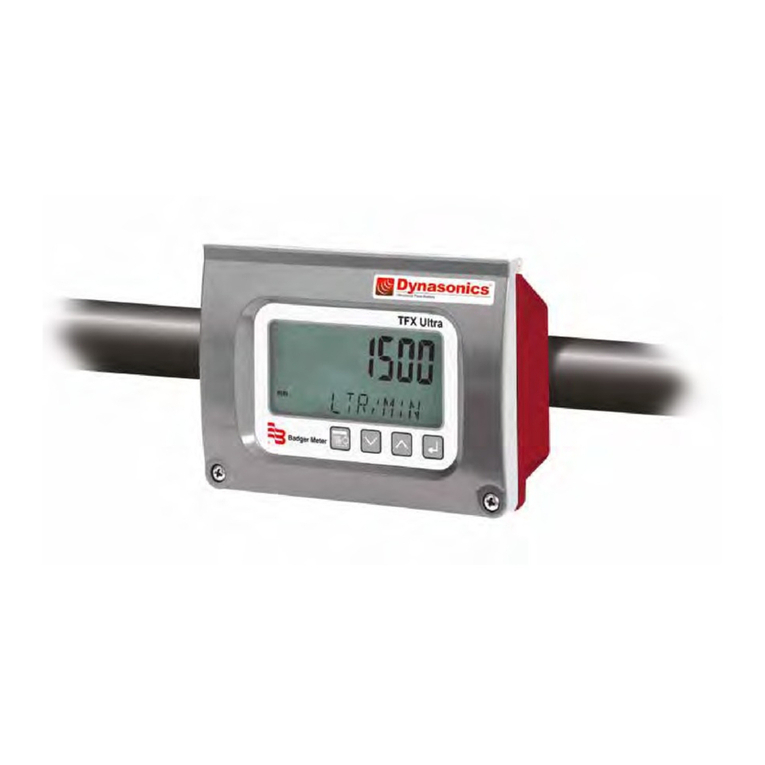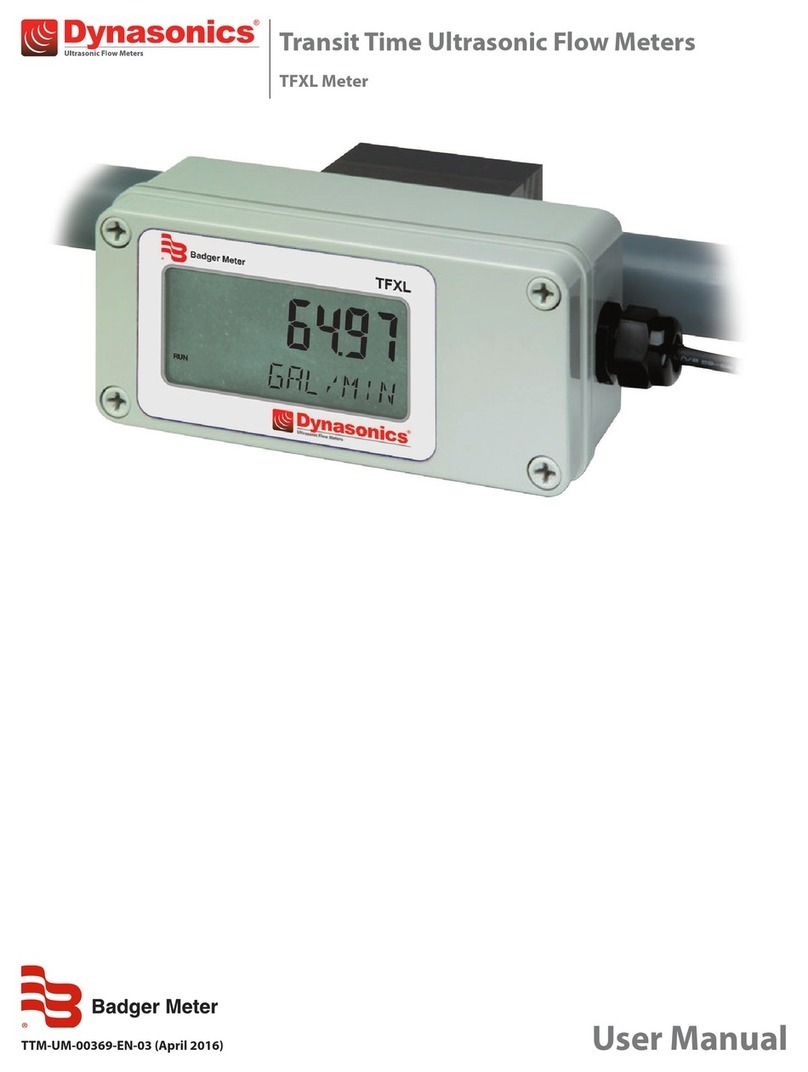
Rev. 01/11 -1.7- TFXL-X
PART 1 - SPECIFICATIONS
DESCRIPTION SPECIFICATION
Liquid Types Most clean liquids or liquids containing minimal amounts of suspended solids.
Power Requirements 11-30 VDC @ 0.25A
Velocity 0.1 to 40 FPS (0.03 to 12 MPS)
Inputs / Outputs
Display Type: 2 line 8 character LCD; Top row: 0.7" (18mm) tall, 7-segment;
Bottom row: 0.35" (9mm) tall, 14-segment
Rate: 8 maximum rate digits, lead zero blanking
Total: 8 maximum totalizer digits, exponential multipliers from –1 to +6
Units Engineering Units: Feet, gallons, ft³, million-gal, barrels (liquid & oil), acre-feet, lbs., meters, m³, liters,
million-liters, kg
Rate: Second, minute, hour, day
Ambient Temperature General Purpose: -40 to +185 °F (-40 to +85 °C);
Hazardous Locations DTTN: -40 to +185 °F (-40 to +85 °C)
Pipe Surface
Temperature
DTTS: -40 to 185 °F (-40 to +85 °C); DTTH: -40 to +350 °F (-40 to +176 °C)
DTTN/DTTC: -40 to +250 °F (-40 to +121 °C)
Enclosure NEMA 3 (Type 3) ABS or polycarbonate, brass or SS hardware,
3W 6L 2.5H inches (75W 150L 63L mm), pipe mount
Transducer Type Clamp-on, uses time of flight ultrasonics
Pipe Sizes ½ inch (12 mm) and larger
Pipe Materials Carbon steel, stainless steel, copper, and plastic
Accuracy DTTN/DTTH: ±1% of reading at rates >1 FPS (0.3 MPS); ±0.01 FPS (±0.003 MPS) at rates lower than
1 FPS (0.3 MPS)
DTTS/DTTC: 1" and larger units ±1% of reading from 10-100% of measuring range, ±0.01 FPS
(±0.003 MPS) at rates lower than 10% of measuring range; ½" and ¾" units ±1% FS
Refer to Form TFXL for applicable measuring ranges for each DTTS/DTTN transducer model
Repeatability ±0.5% of reading
Response Time 0.3 to 30 seconds, adjustable
Protection Reverse-polarity, surge suppression
Installation DTTN and DTTS Transducer
General Requirements: ANSI/ISA 82.02.01
Hazardous Locations: ANSI/ISA 12.12.01Class I Div 2 Groups C & D
DTTN Transducer and IS Barrier (-F option)
Hazardous Location Designation: Class I Div 1, Groups C & D; T5 Intrinsically Safe Exia
Process Control Equipment: CSA C22.2 No. 142
Intrinsically Safe Equipment: CSA C22.2 No. 157
Intrinsically Safe & Associated Apparatus: UL913
Energy Management Equipment: UL916
ULTRALINK ™Utility Windows®compatible software utility, requires serial communication cable
Windows 2000, Windows XP, Windows Vista®, and Windows®7 compatible
4-20mA Output (standard output)
Resolution
Power
Insertion loss
Loop impedance
12-bit for all outputs
Source
5V maximum
900 Ohms maximum
Can share ground common with
power supply — isolated from
piping system
Operation
Pulse duration
Source / sink
Logic
Normal state - High;
Pulses low with display
total increments
30mSec minute
2 mA maximum
5 VDC
Turbine Frequency Output / TTL - Pulse Output
Switch selectable
Type
Amplitude
Frequency range
Duty cycle
Non-ground referenced AC /
Ground referenced square-wave
500mVpp minimum / 5VDC
0-1,000Hz
50% ±10%
Totalizer Pulse

